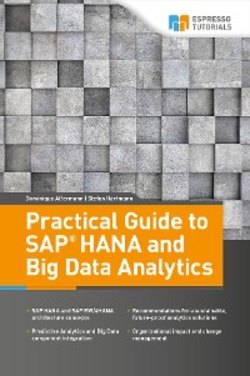Читать книгу Practical Guide to SAP HANA and Big Data Analytics - Stefan Hartmann - Страница 32
2.1.1 SAP HANA 2.0
ОглавлениеIn December 2016, SAP released SAP HANA 2.0—the digital foundation to build the next-generation of analytics applications. In the following section, we highlight selected innovations and new features of this version.
First, let’s start with the migration path. With SAP HANA 1.0 SPS 10 or higher, an upgrade to SAP HANA 2.0 SPS 00 can be performed directly. When migrating from SPS 12, you can test SAP HANA 2.0 SPS 00 with the capture and replay function before migrating. If you run SAP HANA 1.0 SPS 9 or older, you need to upgrade to SAP HANA 1.0 SPS 12 first.
One of the new features in SAP HANA 2.0 is the Active/Active (read-enabled) option, where a secondary SAP HANA system (which is synchronized with the primary through logs) is utilized to take over read-intensive processes. Whereas read and write operations are executed only on the primary SAP HANA system, the second one acts autonomously in answering queries (read operations).
Active/Active (read-enabled) option—SAP S/4HANA case
A good example of an SAP S/4HANA system (see Section 2.2.1) which uses the Active / Active read-enabled option can be found at: https://blogs.sap.com/2017/06/22/ making-use-of-an-activeactive-read-only-hana-database-in-s4-hana/
Furthermore, and especially against the background of General Data Protection Regulation (GDPR) in Europe, data security and authorization management (e.g. on LDAP groups) has improved. New encryption features have been released (e.g. full native data at rest encryption, enhanced encryption key management).
Workload management helps SAP HANA 2.0 to better avoid system-overload situations. Requests can be automatically rejected from the database when a threshold is exceeded.
With regard to data integration features, the Smart data integration (SDI), Smart data quality, and Smart data access components have been enhanced. For instance, SDI now allows virtual procedures (e.g. via BAPI) to perform read/write operations with ABAP-based systems.
In the streaming area, messages are now guaranteed via REST interface. In a real-time analysis scenario, data delivery is now ensured. New adaptors like oDATA and JSON enable greater flexibility.
Regarding administration, SAP HANA Cockpit has been re-architected and now also supports on-premise and cloud implementations. Database management has been unified.
There are many other changes and features available with SAP HANA SPS 00; for example, new solutions, improvements, and component reforms relating to Workload Capture and Replay, Backup and Recovery, SAP Enterprise Architecture Designer (Edition for SAP HANA), Dynamic Tiering, Predictive Analytics Library, High Availability and the SAP HANA Extended Application Services (see also Section 2.1.3).
SAP HANA 2.0 features
The following blog offers a good starting point to identify the major changes, which come with SAP HANA 2.0 SPS 00: https://blogs.sap.com/2016/12/01/whats-new-with-sap-hana-2.0-sps-00-by-the-sap-hana-academy/.
New support packages and stacks (SPS) for SAP HANA 2.0 are released twice a year, and the latest information and updates are available at: https://www.sap.com/products/hana/features/whats-new.html.
